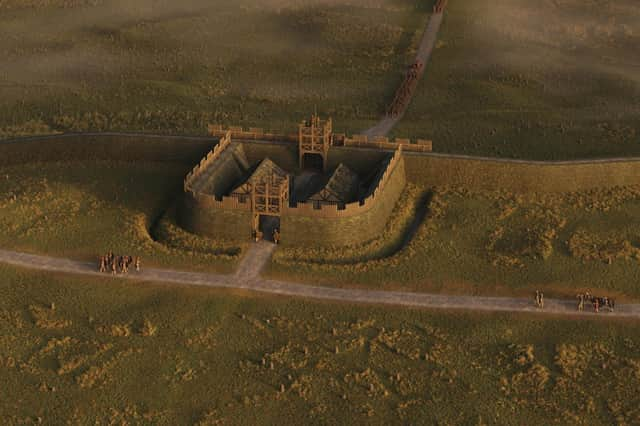Roman fortlet lost for hundreds of years found near Scottish primary school


Historic Environment Scotland (HES) experts made the discovery during a geophysical survey in a field near Carleith Primary School in West Dunbartonshire.
Previous excavations to find the fortlet were unsuccessful, but new technology allowed the HES archaeological survey team to find the buried remains.
Advertisement
Hide AdAdvertisement
Hide AdThe survey team used gradiometry, a geophysical surveying technique, to look under the soil without the need for excavation.
Gradiometry measures small changes in the earth’s magnetic field to detect archaeological features otherwise invisible from the ground surface.
This technique was able to identify the stone base of the fortlet, which remains buried underground. On top of this base, turf would have been laid to build a rampart about two metres high.
HES said that the newly-discovered fortlet would have been part of several such structures along the Antonine Wall.
It would have been occupied by 10 to 12 Roman soldiers who were stationed at a larger fort nearby, likely to be at Duntocher, and manned the fort for a week at a time before being replaced by another detachment.
Antiquarian Robert Sibbald made reference to the fortlet in 1707, writing that he had seen a fortlet in the area around Carleith Farm, and excavation teams looked for it in the 1970s and 1980s without success.
Riona McMorrow, deputy head of World Heritage at HES, said: “It is great to see how our knowledge of history is growing as new methods give us fresh insights in the past.
“Archaeology is often partly detective work, and the discovery at Carleith is a nice example of how an observation made 300 years ago and new technology can come together to add to our understanding.”
Advertisement
Hide AdAdvertisement
Hide AdThe announcement of the discovery comes on World Heritage Day, the international celebration of cultural heritage.
The Antonine Wall is one of Scotland’s six Unesco World Heritage Sites.
This discovery has led to HES reviewing the site’s designation to ensure the fortlet is recognised and protected as part of the Antonine Wall.
While up to 41 fortlets may have lined the wall when it was built, only nine have previously been found.
HES said that the geophysical survey will help to better understand and protect the Antonine Wall.
Professor David Breeze, the former Chief Inspector of Ancient Monuments for HES, said the fortlet would have been part of the wider network designed to control the indigenous tribal populations.He said: "The Antonine Wall was the most sophisticated frontier of the Roman Empire and inspite of over 100 years of excavation it still has many secrets to reveal."The purpose of these fortlets was for security and access.
"We believe that there are many more of these to discover and finding these will help us understand the original plan for the frontier.”
Comments
Want to join the conversation? Please or to comment on this article.